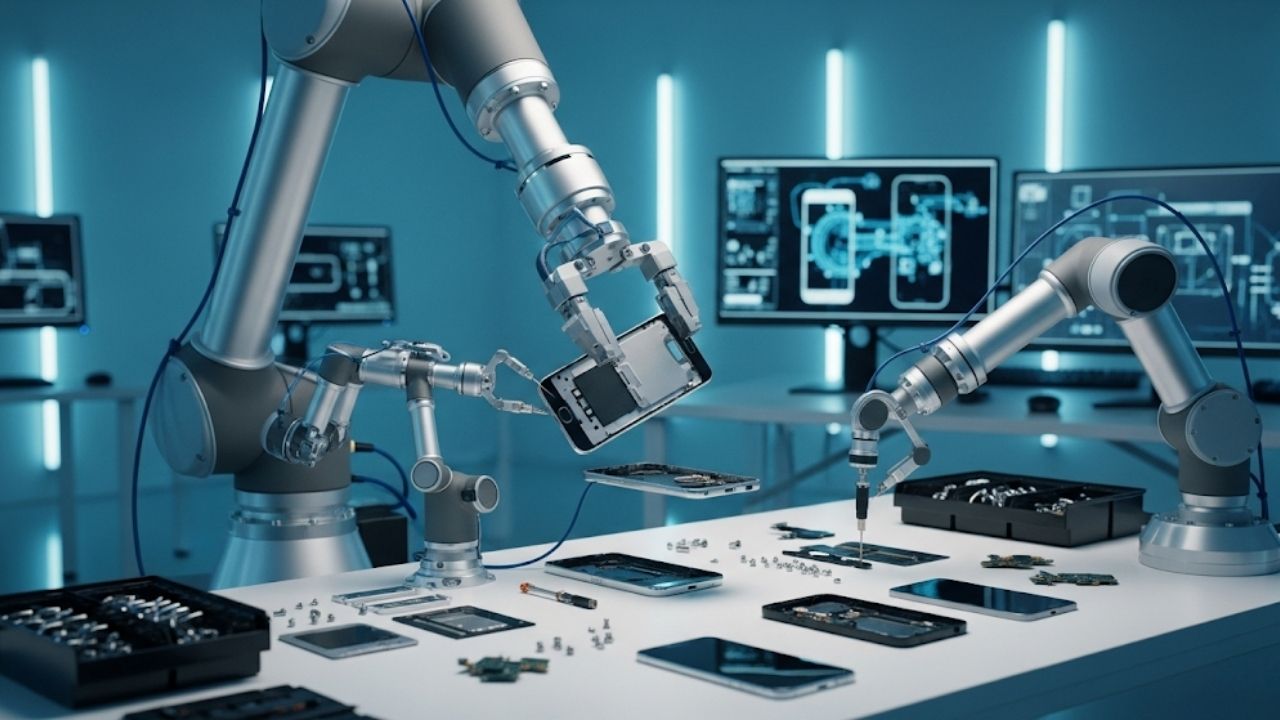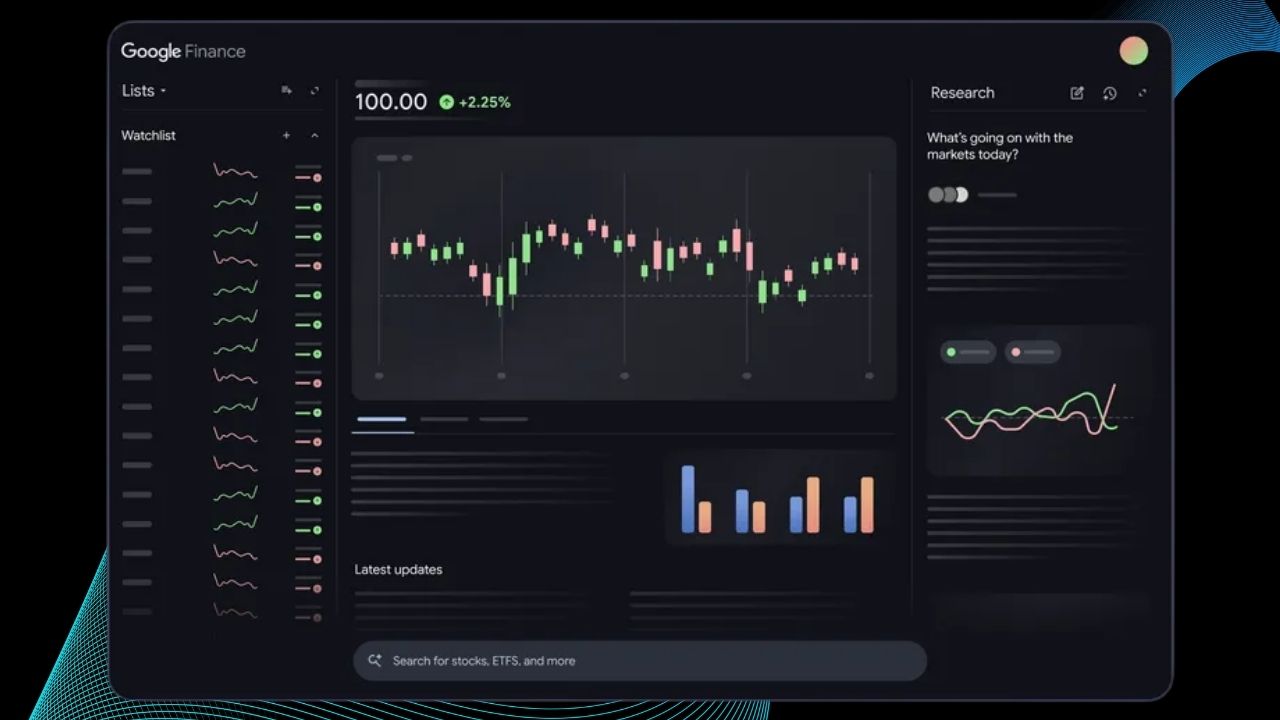AWS Reveals Quantum Chip Ocelot: Quantum computing has long been hailed as the next big leap in technology, promising to solve problems far beyond the reach of today’s most powerful supercomputers. However, one of the biggest hurdles has been error correction—a technical challenge that has kept practical quantum computers out of reach.
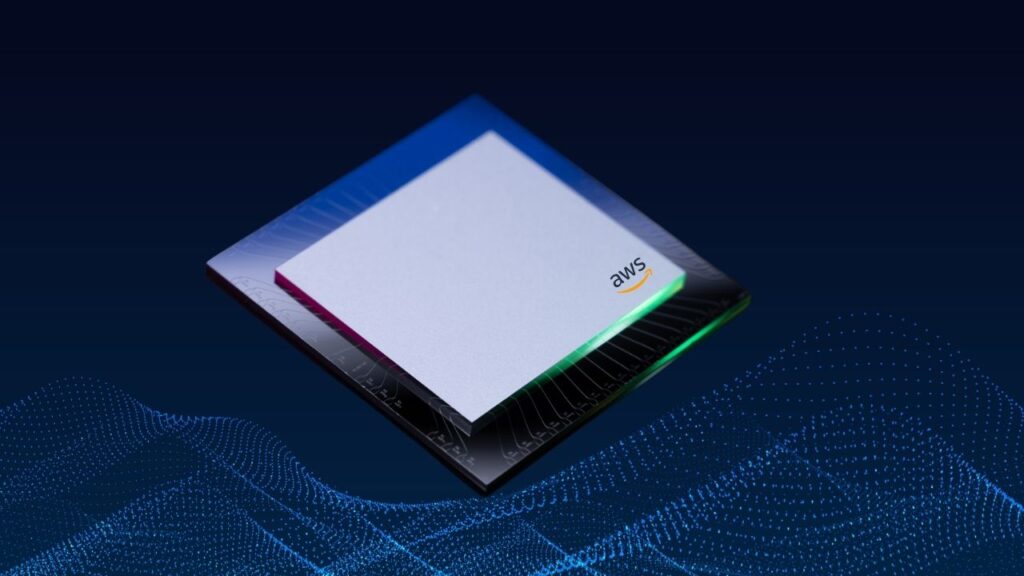
In a major breakthrough, Amazon Web Services (AWS) has unveiled Ocelot, a quantum computing chip that slashes the cost of quantum error correction by up to 90 percent. This innovation could accelerate the arrival of practical, fault-tolerant quantum computers by years.
AWS Reveals Quantum Chip Ocelot
| Feature/Fact | Details |
|---|---|
| Chip Name | Ocelot |
| Error Correction Cost Reduction | Up to 90% |
| Core Technology | Cat qubits, bosonic error correction, superconducting tantalum circuits |
| Number of Qubits (per chip) | 5 data (cat) qubits, 4 error-detecting qubits, 5 buffer circuits |
| Manufacturing Method | Scalable microelectronics techniques |
| Potential Impact | Accelerates practical quantum computers by up to 5 years |
| Developed By | AWS Center for Quantum Computing at Caltech |
| Professional Use Cases | Drug discovery, cryptography, finance, materials science |
| Official Website | AWS Quantum Computing |
The unveiling of AWS’s Ocelot quantum chip marks a pivotal moment in the journey toward practical quantum computing. By cutting error correction costs by up to 90 percent, Ocelot makes it possible to build smaller, cheaper, and more reliable quantum computers. This breakthrough could accelerate advancements in science, technology, and industry, bringing the promise of quantum computing closer to reality for everyone.
What Is Quantum Computing and Why Does Error Correction Matter?
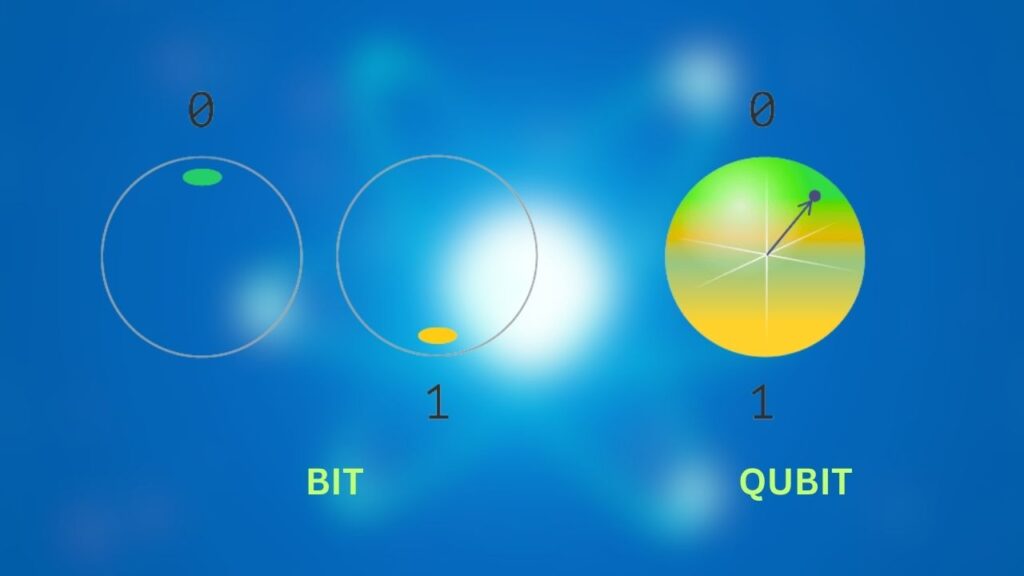
Quantum computers use quantum bits, or qubits, which can represent both 0 and 1 at the same time. This property, called superposition, allows quantum computers to process information in ways that classical computers cannot. They also use entanglement and quantum tunneling to solve certain problems much faster than traditional computers.
But qubits are extremely sensitive. Even the tiniest vibration, a bit of heat, or a stray electromagnetic wave can cause a qubit to lose its quantum state—a problem known as decoherence. When this happens, calculations can go wrong. That’s why quantum error correction is essential: it protects quantum information from these tiny disturbances, ensuring reliable results.
The Challenge: Quantum Error Correction Is Expensive
Traditional quantum error correction requires encoding information across many physical qubits to create a single logical qubit—one that can be used reliably in computations. This means you might need hundreds or even thousands of physical qubits just to get a few logical qubits. The result? Quantum computers become huge, complex, and expensive to build and operate.
How Ocelot Changes the Game
A New Approach: Cat Qubits
Ocelot uses a special type of qubit called a cat qubit, inspired by Schrödinger’s famous cat thought experiment. Cat qubits are designed to naturally suppress certain types of errors, making them more stable than traditional qubits. This means fewer extra qubits are needed for error correction.
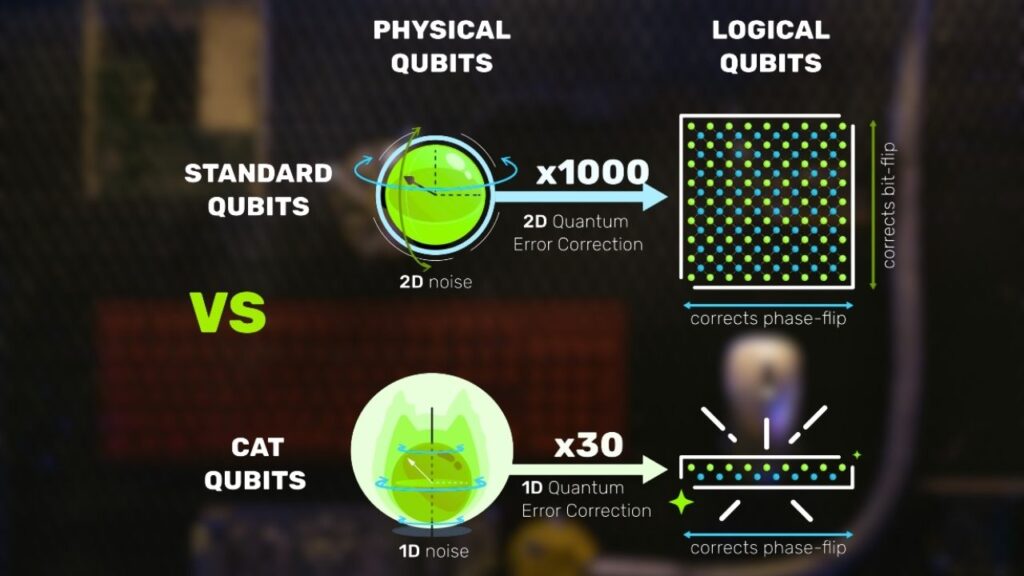
Built-In Error Correction
Instead of adding error correction as an afterthought, Ocelot was designed from the ground up with error correction in mind. The chip integrates 14 key components: 5 data (cat) qubits, 5 buffer circuits to stabilize the system, and 4 error-detection qubits. These work together to detect and fix errors as they happen, making the whole system more reliable and efficient.
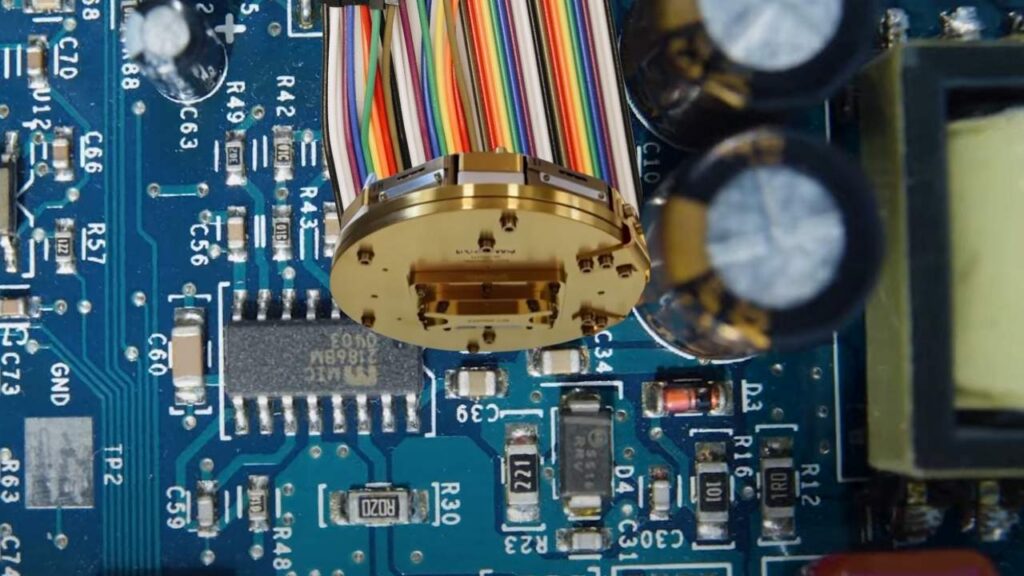
Superconducting Tantalum Circuits
Ocelot’s qubits use oscillators made from a superconducting material called tantalum. This material is highly effective at storing quantum information and is processed using advanced microelectronics techniques. As a result, Ocelot chips can be manufactured at scale, much like traditional computer chips.
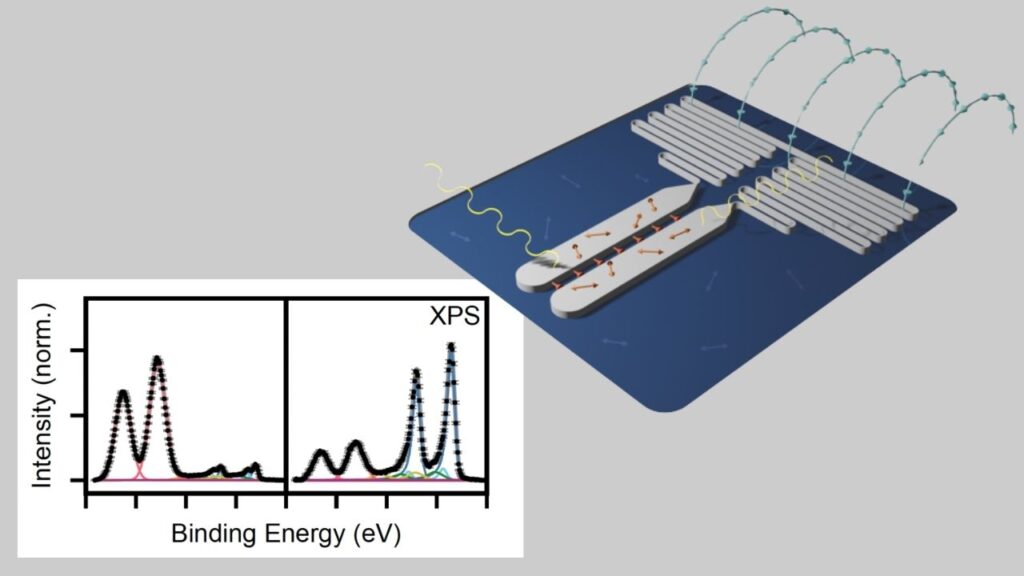
Scalability and Cost Savings
By combining cat qubits, built-in error correction, and scalable manufacturing, Ocelot reduces the resources needed for error correction by 5 to 10 times compared to conventional methods. This translates to a cost reduction of up to 90 percent, making quantum computers smaller, cheaper, and more practical for real-world use.
Why Does This Matter? Real-World Impact
Accelerating the Quantum Future
AWS estimates that Ocelot could speed up the arrival of practical, fault-tolerant quantum computers by up to five years. This is a big deal, as it could unlock new discoveries and solutions in fields like:
- Drug discovery: Simulating molecules and proteins to develop new medicines faster.
- Materials science: Designing new materials with unique properties for electronics, batteries, and more.
- Cryptography: Breaking current encryption methods (and creating new, quantum-safe ones).
- Finance: Optimizing investment strategies and risk analysis.
- Artificial intelligence: Solving complex optimization problems that are out of reach for classical computers.
A Step Toward Mainstream Quantum Computing
While Ocelot is still a prototype, its architecture shows a clear path to building larger, more reliable quantum computers. AWS plans to keep refining the technology, improving fabrication processes, and integrating new materials to push performance even further.
How Does Ocelot Work? A Simple Breakdown
1. Cat Qubits: The Heart of Ocelot
Cat qubits are quantum oscillators that can exist in two opposite states at once. This makes them less likely to flip randomly due to noise, which is a common source of errors in quantum computing.
2. Error Detection and Correction
Ocelot’s error-detecting qubits constantly monitor the data qubits for signs of trouble. If an error is detected, the system can correct it on the fly, without stopping the computation.
3. Buffer Circuits for Stability
The buffer circuits help stabilize the entire chip, making sure the qubits stay in their desired states for longer periods. This stability is crucial for running complex quantum algorithms.
4. Scalable Manufacturing
Ocelot is built using techniques from the microelectronics industry, which means it can be mass-produced more easily than other quantum systems. This scalability is key to making quantum computing accessible to more people and organizations.
Practical Advice: What Should Professionals and Students Know?
For IT Leaders and Researchers
- Stay updated: Quantum computing is evolving rapidly. Follow AWS Quantum Computing and other reputable sources for the latest research and developments.
- Invest in skills: Learn the basics of quantum computing, quantum programming languages (like Qiskit or Cirq), and the principles of error correction.
- Explore partnerships: Collaborate with academic institutions, cloud providers, and industry consortia to experiment with early quantum hardware and software.
For Students and Educators
- Start with the basics: Understand classical computing first, then move on to quantum concepts like superposition, entanglement, and decoherence.
- Use simulators: Many cloud providers, including AWS, offer quantum simulators that let you experiment with quantum algorithms without needing real quantum hardware.
- Join quantum communities: Participate in online forums, hackathons, and open-source projects to gain hands-on experience.
New Framework Offers Microscopic, Highly Precise Energy Control for Advanced Nanoscale Devices
World’s Thinnest Silicon-Based Material Unveiled, Opening New Frontiers for Next-Gen 2D Electronics
FAQs About AWS Reveals Quantum Chip Ocelot
What is Ocelot, and why is it important?
Ocelot is AWS’s first quantum computing chip designed to make quantum error correction much cheaper and more efficient. It could make practical quantum computers a reality much sooner by reducing the cost and complexity of error correction by up to 90%.
How does Ocelot differ from previous quantum chips?
Ocelot uses cat qubits and integrates error correction directly into the chip’s design, rather than adding it later. This makes it more efficient and scalable than traditional approaches.
When will practical quantum computers be available?
While Ocelot is still a prototype, AWS believes that its architecture could accelerate the timeline for practical, fault-tolerant quantum computers by up to five years.
What are the main applications of quantum computing?
Quantum computers could revolutionize drug discovery, materials science, cryptography, finance, and artificial intelligence by solving problems that are too complex for classical computers.

